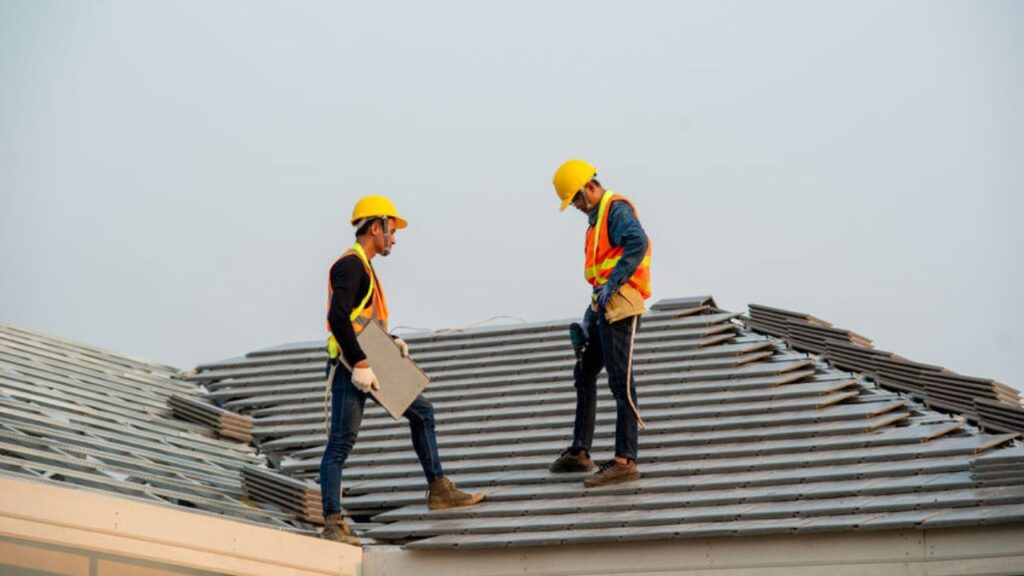What is the difference between commercial and residential roofing?
Whether you need a new roof for your home or your business, it is important to understand the differences between commercial and residential roofing. Commercial and residential roofs are different in terms of design, materials, maintenance, and installation costs.
Probably the most obvious difference between commercial and residential roofs is their design. On a commercial roof, the slope tends to be very low or entirely flat. You often see these types of roofs on warehouses, shops, restaurants, and factories. The roof tends to be much larger than a typical residential roof.

What’s The Difference Between Commercial and Residential Roofing?
Design
The first major distinction between residential and commercial roofing is the design. Commercial buildings are larger in square footage than residential properties, and the roof will need to be larger to support the extra weight and size of the building. Commercial roofs have very low slopes almost entirely flat. You can find commercial roofs on malls, factories, warehouses, and other commercial buildings. Commercial roofs are strong enough to hold heavy items like HVAC systems and industrial pipes.
Residential buildings have a pitched roof with a higher slope that is quicker and easier to install. Residential roofs are usually smaller and usually are not strong enough to hold heavy equipment with the exception of solar panels. Residential roofs commonly have chimneys, vent stacks, and skylights. It is important to hire roofing contractors that have experience in the type of roofing you need so you don’t end up with wrong or low-quality work.
Materials
Depending on size, environmental exposure, design, and other factors, commercial and residential roofs must be made of durable materials. The right materials will ensure a maximum lifespan of the roof, but also make it adaptable and easy to maintain. It is worth noting that commercial roofs cover a larger surface and incorporate elements like ventilation and air conditioning. The materials used have to support this design and last longer. Both residential and commercial roofs can be built from durable materials such as:

- Ceramic, asphalt, tile, or slate shingles
- Solar shingles
- Wood Shakes
- Metal Roofing
For residential roofing, the most popular material is asphalt shingles. It is easy to install, last long, and is cost-effective.
Commercial roofs are not good candidates for shingles. They are usually covered with modified bitumen, gravel, tar or single-ply coverings, or other commercial roofing systems. It requires multiple layers, insulation, decking, and coatings. There are way more options for commercial roofing which is why it is important for building owners to consult with experienced commercial roofers who can help you determine the right type of roofing system for you.
Maintenance
Commercial buildings cover larger square footage than residential buildings, so maintenance of the roofing is more demanding. You should keep the gutters clean at all times, especially during the fall and winter when debris can easily cause blockages. You should do regular inspections to make sure everything is in place.
Residential roofs are easier to maintain because they’re smaller in size, which makes it easier to look over for any damages. You can also have a roofing replacement company replace any broken shingles yourself and unblock the gutters when needed.

Installation and Cost
The biggest difference between a commercial and residential roof is the process of installation and the total cost. Always get quotes before you start any work. Be sure to seek out reputable and experienced residential or commercial roofers to see if it fits your budget. You should expect commercial roofing to be more expensive than residential due to the amount of labor and materials, size, and protection equipment needed for the installation.

